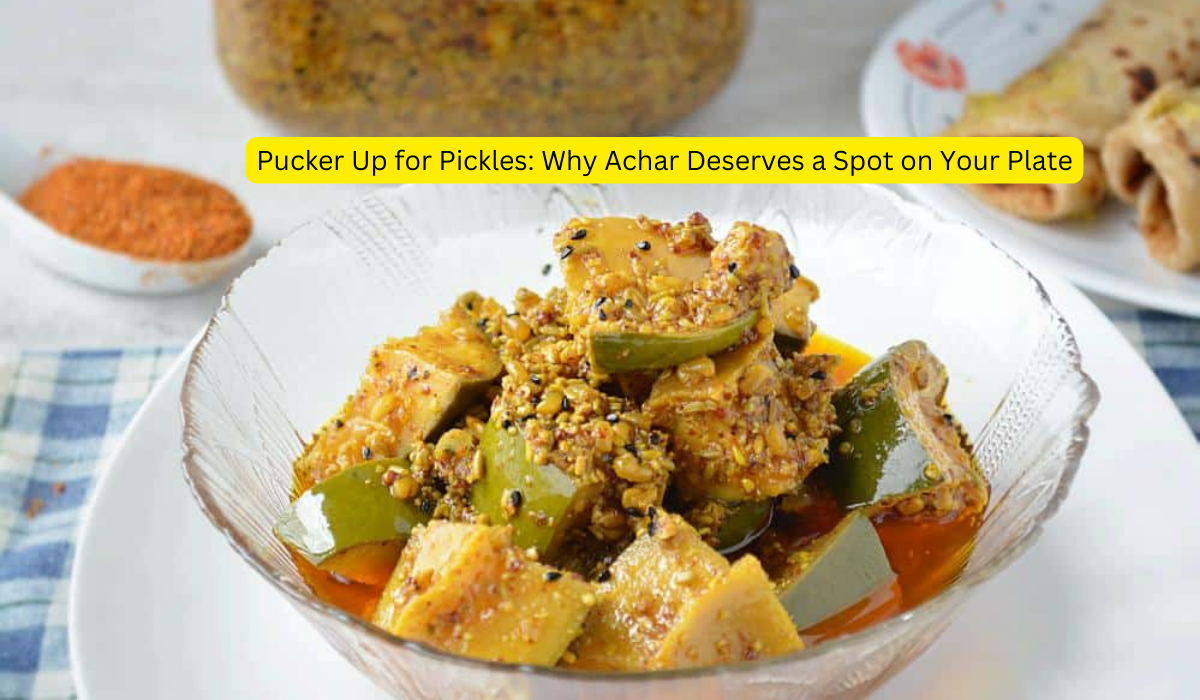Ever wondered why your grandparents insisted on having a tiny bowl of pickle alongside every meal? It wasn’t just about tradition, although that certainly plays a part. Achar, the tangy, spicy condiment synonymous with Indian cuisine, is a nutritional powerhouse waiting to be explored. Imagine a burst of flavor that cuts through the richness of a curry, awakens your taste buds, and adds a surprising depth to your meal. That’s the magic of achar!
This article dives into the world of achar, exploring its historical roots, highlighting its health benefits, and offering tips on incorporating this delicious condiment into your everyday diet. So, ditch the boring ketchup and mustard, and get ready to discover the world of Indian pickles!
A Tangy Tale: The History of Achar
Achar’s history is as rich and flavorful as the pickle itself. Picture a time before refrigerators, when preserving food was essential for survival. Our ancestors cleverly used pickling as a way to extend the shelf life of seasonal vegetables and fruits.
More Than Preservation: Achar wasn’t just about survival; it was also about adding a vibrant explosion of flavor to everyday meals. The use of spices and herbs not only enhanced the taste but also offered additional health benefits, a fact passed down through generations.
A Global Citizen: While achar is most commonly associated with India, variations of pickled vegetables and fruits can be found across the globe, from kimchi in Korea to sauerkraut in Germany. This culinary technique serves as a testament to the human ingenuity in preserving food and adding a unique twist to everyday meals.
Beyond Taste: The Health Benefits of Achar
Achar is more than just a delicious condiment; it’s a nutritional powerhouse packed with health benefits. Here are some reasons to add achar to your diet:
Probiotic Powerhouse: The fermentation process used to create achar is a breeding ground for good bacteria, also known as probiotics. These gut-friendly bacteria play a vital role in digestion, boosting your immune system and promoting overall gut health.
Vitamin and Mineral Bonanza: Achar is a rich source of essential vitamins and minerals, depending on the vegetables or fruits used. For example, lemon pickle is a good source of vitamin C, while mango pickle is loaded with vitamin A.
Weight Management Aid: The tangy and spicy nature of achar can help curb cravings and promote satiety. A small amount of achar alongside your meal can help you feel fuller for longer, potentially aiding in weight management efforts.
Reduced Sodium Options: While some achars can be high in sodium, there are low-sodium varieties available. Look for homemade options or brands that use natural ingredients and minimal added salt.
Achar for Everyone: How to Incorporate Pickles into Your Diet
Achar’s versatility knows no bounds! Here are some ways to incorporate this tangy treat into your meals:
- The Classic Combo: The most traditional way to enjoy achar is as a condiment alongside rice, dal, and curries. The contrasting flavors add depth and complexity to your meal.
- Snack Time Savior: Craving a crunchy and flavorful snack? Try chopped vegetables with a dollop of achar for a healthy and satisfying option.
- Sandwich Surprise: Elevate your boring sandwich by adding a layer of achar. The tangy and spicy flavors will add a whole new dimension to your lunchtime staple.
- Salad Sensation: Achar can be a great addition to salads, providing a burst of flavor and a textural contrast to the greens.
Experiment and Explore: Don’t be afraid to experiment! Achar can be used in dips, added to wraps, or even incorporated into marinades for grilled meats. The possibilities are endless!
Conclusion: A Tangy Twist on Tradition
Achar is more than just a traditional Indian condiment; it’s a delicious and healthy addition to any diet. With its vibrant flavors, impressive health benefits, and versatility, achar deserves a permanent spot on your plate. So, next time you’re looking for a way to add a zing to your meals, pucker up for some achar!
Embrace the tangy tradition and discover the magic that a small bowl of achar can bring to your culinary journey.
Frequently Asked Questions
1. What are some of the common vegetables and fruits used to make achar?
A vast array of vegetables and fruits can be pickled to create different types of achar. Here are some popular options:
- Vegetables: Mango, lime, cauliflower, carrots, chilies, and green garlic are just a few of the many vegetables used in achar making.
- Fruits: Mango is a particularly popular fruit for achar, but options like gooseberry (amla) and even jackfruit can also be pickled.
2. How long does homemade achar typically last?
The shelf life of homemade achar depends on the type of vegetables or fruits used, the pickling process, and storage conditions. Generally, properly prepared and stored homemade achar can last for several weeks or even months in a cool, dry place.
3. Can I make achar at home?
Absolutely! Making achar at home allows you to control the ingredients and adjust the level of spice and tanginess to your preference. There are numerous online resources and cookbooks with easy-to-follow achar recipes for beginners.
4. Are there any substitutes for achar if I can’t find it readily?
If you can’t find achar in your local grocery store, there are a few substitutes you can consider. Pickled vegetables like sauerkraut or kimchi offer a similar tangy and slightly spicy flavor profile. However, they won’t have the unique blend of spices and herbs that define traditional Indian achar.
5. What if I don’t like spicy food?
Not all achars are created equal! While some varieties pack a punch, there are milder options available. Look for achars made with less chilies or explore fruit-based achars, like mango pickle, which can be sweet and tangy without being spicy.

